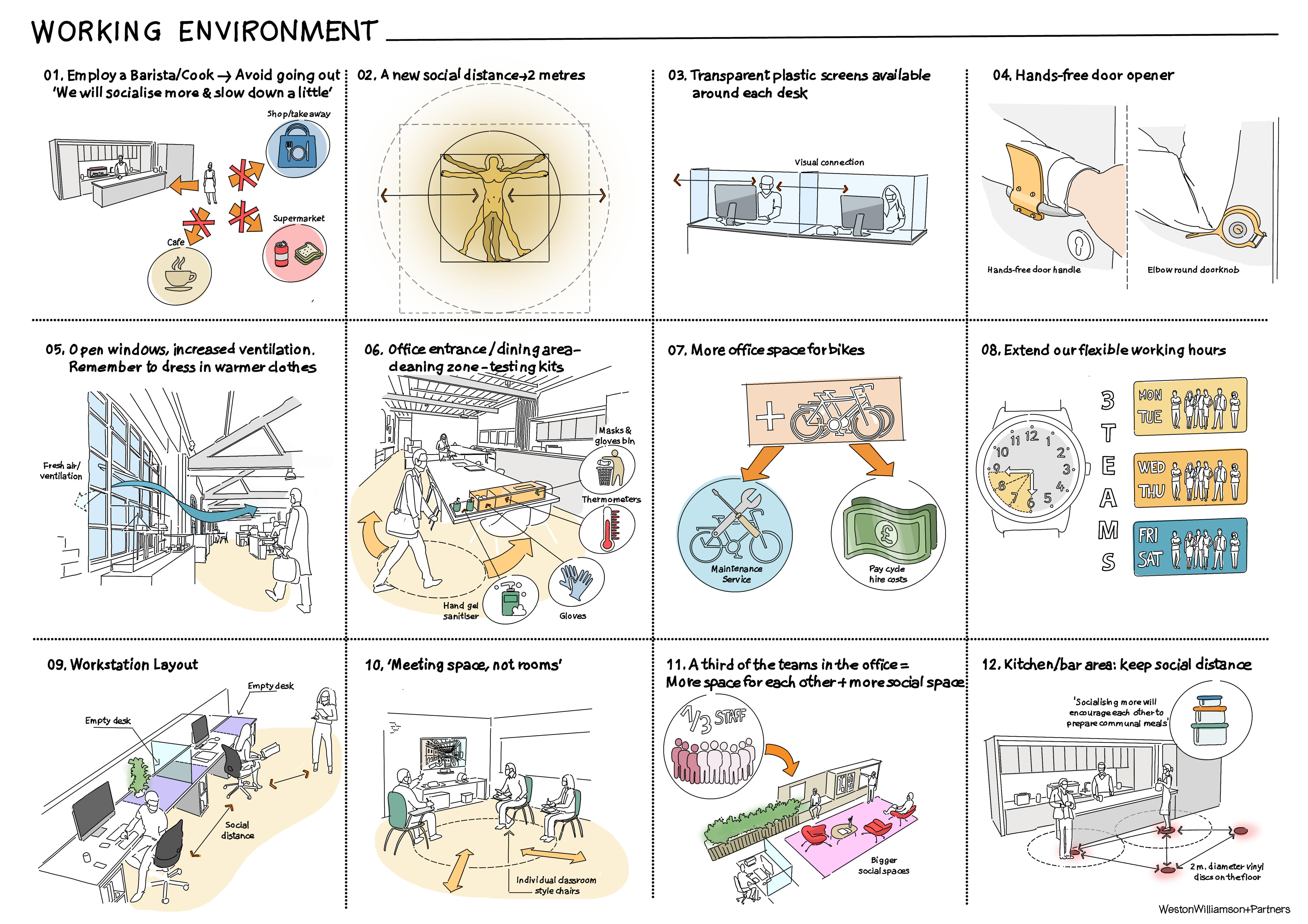In a recent podcast for the World Economic Forum, Adam Grant, professor of management and psychology at the University of Pennsylvania's Wharton School, talked about the profound impact of the COVID-19 pandemic on the world of work and how companies should reflect on what they have learned from enforced experiments around home working.
When investigating the effects of this forced social experiment, the question on many people’s minds is whether we will still have a physical and social need for office space post-COVID-19?
For Dubai-based Nordic Office Architects managing director Firas Hnoosh, the answer is overwhelming yes, but not necessarily in the same way we did before.
“Humans are communal beings, and we need to exchange, create and innovate face-to-face from time-to-time,” Hnoosh explains. “When we are around colleagues who support us, give us feedback and enrich our experience, it can provide us with energy, drive and confidence. Having said that, not all of us need to be physically at the office all the time. We can do much of our focused work outside the office, away from distractions.”
So, if we are searching for ways to get people safely back to work, what might the offices of the future look like? According to Hnoosh, the shift away from the physical office started years before the COVID-19 outbreak; however, he believes the pandemic will accelerate and refocus this shift.
“The concept of hot-desking or hotelling has been around for some time, and I believe this concept will be expanded to reach many types of businesses becoming a normal part of our work culture where we work one or two days, or a number of hours, away from the office every week. If used wisely, it may just provide the right work-life balance all of us look for.”
Hnoosh imagines that offices will naturally evolve with the changing routines. As desks become less personalised, the office will be redesigned to inspire more creativity and encourage healthy human exchange since we would be at the office mostly to interact with our colleagues. Less desks per square metre could mean we take more liberties with office layouts. Formal desk spaces would be replaced with informal soft seating and coffee breakout areas. Office planning standards could be reinvented to allow minimum distances between seats and limit physical interaction. We will need fewer meeting rooms as we shift more meetings online.
“We will also see a rise in designs that take hygiene into account such as desks that are easier to clean regularly and HVAC systems that disinfect the air, limit air recirculation and provide natural ventilation where possible,” Hnoosh explains. “We will also see an even larger expansion in the use of digital services and AI to service customers leading to less front office areas and more focus on the wellbeing of workers rather than the expectations of the customer.”
So how then are designers and architects approaching this? Chris Williamson from Weston Williamson and Partners in London, UK, has found that although we can function with home working, we work better together, and architects and designers need to be alive to emotional aspects of any return to work, not just the practicalities.
Armed with data about how everyone travels each day, as well as individuals appetite to return to work, and other variables such as family circumstances, personal health, home working conditions etc., Williamson has been attempting to put together a plan for gradual transitioning to a safe studio environment at Weston Williamson and Partners ahead of a vaccine being available for COVID-19.
“Armed with all this data, I am suggesting we re-plan our studio to accommodate 50% of our 100 staff at any one time to allow safe social distancing,” says Williamson. “The studio space is relatively easy to adapt to safe working as we have two side doors which open into the lobby so everyone can wash and change as soon as they enter.”
Other modifications such as holding meetings in open areas rather than closed meeting rooms, and employing a barista and cook rather than having a shared kitchen, will be beneficial in making a more relaxed, calmer sociable studio.
According to Williamson, the studio will be divided into three teams. The blue team will be asked to work on Tuesday and Wednesday, and the red team will be asked to work on Thursday and Friday, while the team will change days the following week. Saturday and Monday will be reserved for Partners and project reviews.
“The key is to do these modifications with style and grace and use these unfortunate circumstances to improve how we work, with climate change in mind,” Williamson explains. “Investment in video conferencing and distance-working facilities has paid off during the lockdown, and we see future investment being essential to allow greater flexible working.”
Williamson highlights that without the very things that attract us to cities - workplace, social gatherings, exchange of ideas, talks, debates, theatre, cinema, galleries, museums – what then is the city? “Thinking further ahead, we should consider that this is not a one-off hiatus and we should plan for this happening again, next time maybe worse. Let’s look back on 2020 as the year a virus made us stay home to reappraise how we live and to make the city better.”


